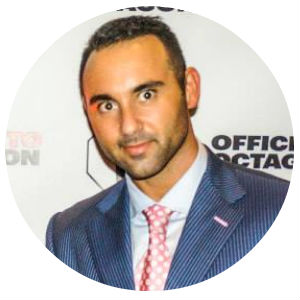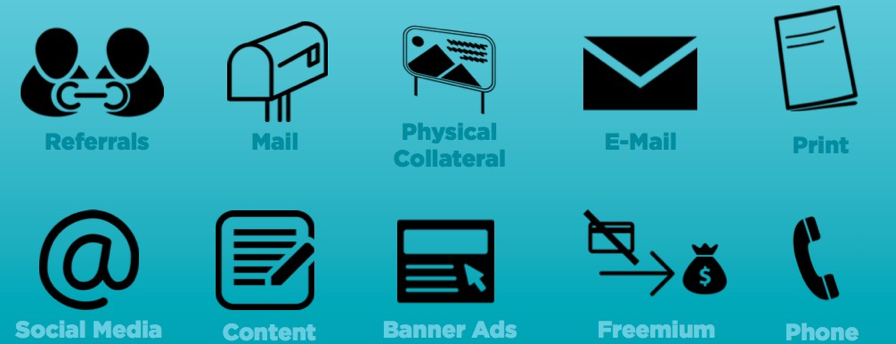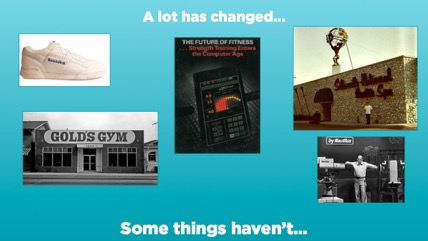 By Brett Maloley, AFS Community Expert
By Brett Maloley, AFS Community Expert
Let’s face it, this is a fun industry. A lot of us get into it because it beats sitting at a desk all day, but quickly realize that it’s a heck of a lot harder than we may had previously thought.
That being said, I think it’s imperative that we first outline the business that we’re in (the fitness industry) and more importantly, how it makes money.
In some way, shape or form, if you are a commercial health and wellness operator, you are putting equipment and/or professionals in a space and charging people to use the aforementioned resources. It’s been that way since the beginning and God willing, it’ll be that way well into the future.
We can talk about all sorts of cliché phrases that will help that space generate as much money as possible, but no matter how you slice it…it comes down to two things:
- Getting members/clients
- Keeping them as long as possible
At the risk of sounding crass, nothing else really matters. So, what are the core “Key Performance Indicators” that we should build our business process around?
Getting members = Cost Per Acquisition
Keeping them as long as possible = Customer Lifetime Value
If you think I’m oversimplifying things, I can’t say I totally disagree with you, but before anything else is relevant, we need to understand this.
It doesn’t matter what kind of equipment you have. It doesn’t matter how nice your bathrooms are. It doesn’t matter if you have a pool, or the best spin class mixes in the country, UNLESS, any of those things are doing one of two things: Helping you get members/clients or Helping you keep your members/clients longer.
Cost Per Acquisition:
Assuming we’re in agreement, here's what’s next. Write down every possible way that you could possibly get new members/clients. It might look something like this:

There are a number of ways to skin a cat, some work better for some people than they do for others. Your job is to try them all and find the most cost effective ways to acquire your clientele. Try everything (within budgetary constraints), accumulate the data and let the numbers speak for themselves.
You may operate in a college town and sponsoring a keg party and giving away a bunch of t-shirts and free trial memberships is the most effective and efficient way to sign up new members… or you may operate in a town where the closest college is 50 miles away, the only certainty is that there’s no article you can read, no seminar you can attend and no speaker you can listen to that could ever possibly tell you the best way to cost effectively acquire members in your given market(s).
How much do you spend acquiring members? This is a tricky question, because it has a lot to do with your longer-term strategy. Assuming you don’t have the luxury of “not making money,” than the amount you pay to acquire a member should be less than the total revenue earned by that same member.
Customer Lifetime Value:
Now that we’ve talked a little bit about acquisition, how do we keep them as long as possible?
There are A LOT of factors that come into play here. We’re in an industry that relies on inactivity, perhaps more so than any other industry. We know a certain amount of our members/clients are  not going to show up or are going to be “inactive” members. I’d challenge you to name another industry that relies on such high levels of “inactivity,” but because, for most people, their membership is the only thing in their lives that shows a commitment to their health and wellness, often times they’d rather pay for a membership that they don’t use than completely give up on their commitment to health and wellness.
not going to show up or are going to be “inactive” members. I’d challenge you to name another industry that relies on such high levels of “inactivity,” but because, for most people, their membership is the only thing in their lives that shows a commitment to their health and wellness, often times they’d rather pay for a membership that they don’t use than completely give up on their commitment to health and wellness.
Managing this KPI requires a bit more patience and bit longer play relative to the trial an error, reason being…you need a baseline. Once you establish a baseline, you need to be strategic in the services or offerings you add and/or change.
If you know that engaged members/clients stay longer than the unengaged, you can take steps towards driving engagement. If you know members/clients who come to the studio on Wednesdays, wearing purple shorts, who brush their teeth on the recumbent bike, then put some toothpaste on the cardio floor and find ways to incentivize your members to wear more purple!
Remember, your retention triggers are going to be unique to your studio and what they are is not nearly as important as you knowing that they exist and working towards replicating them. Thanks for reading!
Brett Maloley has had a decade-long career in the fitness industry, both as an executive and as an entrepreneur, having built two successful equipment distribution and consulting companies, a transcendent non-profit geared to combat childhood obesity and serving as the chief executive officer for a publicly traded nutritional supplement distribution platform. Brett is currently a Co-founder and CEO of Boston-based startup Ladder, a mobile platform that connects people with local health and wellness professionals, via digital coaching.


Join the Conversation!